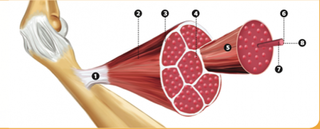How to add muscle mass: The science
The simple science behind adding muscle mass

Your body is a clever old thing. The process of muscle growth is essentially your body’s response to the stress of weight training. It thinks, ‘That was hard. I’d better do something about it so it’s not as difficult next time.’
When you perform resistance exercises, microscopic tears occur in your muscles. Your body then responds to this ‘microtrauma’ by overcompensating: the damaged tissue is repaired and more is added, making your muscles bigger and stronger so the risk of future damage is minimised.This also means that over time you need to increase steadily the weight you lift, because your muscles quickly adapt to deal with the stress to which they’re exposed. It’s thought that this damage to your muscle fibres is the main reason for delayed onset muscle soreness, or DOMS, the symptoms of which include muscle soreness and stiffness in the days after a tough workout. That’s why you should leave at least 48 hours between sessions that target the same muscle group. If you train those muscles again before they’ve had any time to repair and rebuild you risk overtraining, which can result in reduced gains and injury.
Anatomy of a muscle
Muscles are made up of bundles of fibres contained within protective sheaths called fascia, which are then themselves bundled together. The biggest bundle is the muscle itself. The next biggest bundles are the fascicles, which contain the long, single-celled muscle fibres. Muscle fibres are then divided into myofibrils, which are divided once again into bundles of myofilaments, made up from chains of sarcomeres.
1. Tendon: Strong, connective tissue that connects muscle to bone.
2. Epimysium: A layer of connective tissue that encases the entire muscle.
3. Endomysium: Connective tissue that covers the muscle fibres and also contains capillaries (tiny blood vessels) and nerves.
4. Perimysium: A layer of connective tissue that bundles together between ten and several hundred individual muscle fibres to create fascicles.
5.Fascicle: A bundle of individual muscle fibres.
6. Myofilaments: Smallest fibre bundles, made up of sarcomeres, the basic unit of a muscle.
7.Muscle fibre: Individual muscle fibres come in two main types: type 1 or slow-twitch, which are suited to endurance because they are slow to fatigue; and type 2 or fast-twitch, which are quick to fatigue and are therefore better suited to fast explosive movements.
8. Blood vessel: Part of the body’s circulatory system, blood vessels come in three types: arteries, which are responsible for transporting oxygenated bloody away from the heart to the organs, capillaries and tissues which enable the exchange of nutrients and waste products between the blood and the tissues; and veins, which transports deoxygenated blood from the capillaries back to the heart.

Get the Coach Newsletter
Sign up for workout ideas, training advice, reviews of the latest gear and more.
Coach is a health and fitness title. This byline is used for posting sponsored content, book extracts and the like. It is also used as a placeholder for articles published a long time ago when the original author is unclear. You can find out more about this publication and find the contact details of the editorial team on the About Us page.

